CENTRAL NERVOUS SYSTEM : Advancing Neuroscience with our Preclinical CNS CRO services
As a leading Preclinical CNS CRO, Porsolt is dedicated to advancing neuroscience research and drug discovery. Our specialized in vivo and in vitro models cater to a wide range of CNS areas.
Our commitment to scientific excellence drives us to offer a comprehensive suite of CNS efficacy and safety pharmacology assessments. From basic models to regulatory tests, we provide top-tier solutions for CNS therapeutic endpoints with an internationally recognized expertise as a CNS model CRO.
SCROLL
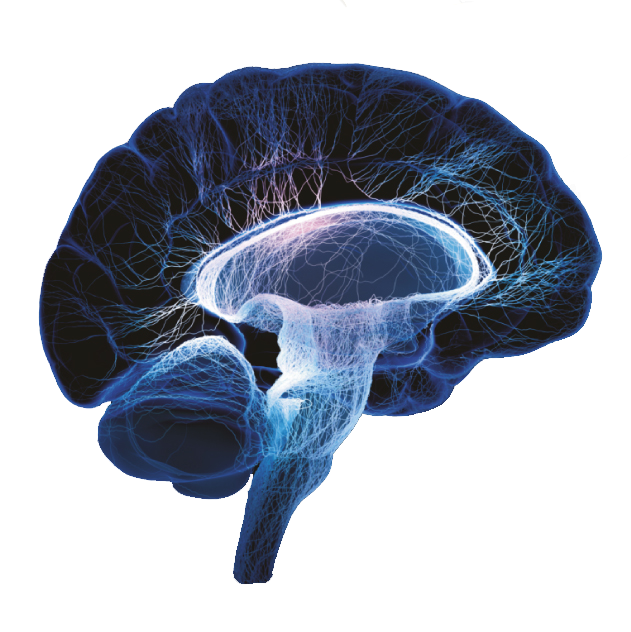
CENTRAL NERVOUS SYSTEM DISEASE
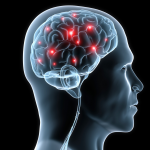
CNS General Screening
CNS General Screening, offered by our Preclinical CNS CRO, is a crucial investigative tool to assess the involvement of the central nervous system (CNS). This comprehensive approach aids in understanding the impact of potential interventions on CNS-related conditions.
| Calcium response (release or sponsaneous oscillation) | Mouse - Rat primary neurons |
| Cytolysis / Viability | Mouse - Rat primary neurons |
| Mitochondrial membrane potential measurement | Mouse - Rat primary neurons |
| Neurotoxicity profiling (calcium spontaneous oscillation modulation) | hiPSC mixed culture organoid (Astrocytes and Neurons) |
| Accelerating rotarod | Mouse – Rat |
| Activity meter | Mouse – Rat |
| Barbiturate interaction (sleep induction) | Mouse – Rat |
| Beam walking | Mouse – Rat |
| Ethanol interaction (sleep induction) | Mouse – Rat |
| Foot-fault | Rat |
| Grip strength | Mouse – Rat |
| Neurological score | Rat |
| Odor discrimination | Rat |
| Primary observation (Irwin) | Mouse – Rat |
| Rectal temperature (option: implants) | Mouse – Rat |
| Removal of adhesive | Rat |
| Rotarod | Mouse – Rat |
| Tetrad test | Mouse – Rat |
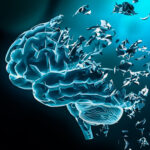
Cognition & Aging
Cognition & Aging is the study of how cognitive abilities change over time, including the effects of aging. Porsolt is a preclinical CNS CRO that conducts preclinical research on the effects of drugs and other treatments on aging and cognitive function.
AGE-RELATED DEFICIT
| Delayed alternation (acquisition) | Aged Rat |
| Delayed alternation (stabilized performance) | Aged Rat |
| Morris water maze (acquisition and retention) | Aged Mouse – Aged Rat |
| Operant reversal | Aged Rat |
| Social recognition | Aged Rat |
| Y Maze - Spontaneous alternation | Aged Mouse – Aged Rat |
EXPERIMENTAL PROCEDURES
| Delayed alternation (acquisition) | Rat |
| Delayed alternation (stabilized performance) | Rat |
| Fear Conditioning (context) | Mouse – Rat |
| Fear Conditioning (cue & extinction) | Mouse |
| Morris water maze (single session) | Rat |
| Morris water maze (acquisition and retention) | Mouse – Rat |
| Operant reversal | Rat |
| Operant Set-shifting | Rat |
| Passive avoidance | Mouse – Rat |
| Social recognition (30 minute retention) | Rat |
| Social recognition (120 minute retention(delay-induced forgetting)) | Rat |
| Y-Maze - Spontaneous Alternation | Mouse – Rat |
MODELS OF PHARMACOLOGICALLY - INDUCED AMNESIA
Diazepam - induced amnesia
| Passive avoidance | Mouse - Rat |
MK 801 - induced amnesia
| Delayed alternation (stabilized performance) | Rat |
| Morris water maze (acquisition and retention) | Rat |
| Operant reversal | Rat |
| Passive avoidance | Rat |
| Social recognition (30 minute retention) | Rat |
PCP - induced amnesia
| Delayed alternation (stabilized performance) | Rat |
| Operant reversal | Rat |
Scopolamine - induced amnesia
| Delayed alternation (stabilized performance) | Rat |
| Morris water maze (acquisition and retention) | Rat |
| Morris water maze (single session) | Rat |
| Operant reversal | Rat |
| Passive avoidance | Mouse - Rat |
| Social recognition (30 minute retention) | Rat |

Drug Abuse & Dependence
Drug Abuse & Dependence is a is characterized by the misuse of drugs and the development of a physical or psychological need for them. Porsolt is one of the few Preclinical CNS CROs that use both CNS biomarkers and CNS preclinical trials to study the effects of drugs on the entire brain and to develop new treatments for these disorders.
| Drug discrimination | Rat |
| Flumazenil-precipitated withdrawal (ECS threshold) | Mouse |
| Naloxone-precipitated withdrawal (Saelens) safety-efficacy | Mouse – Rat |
| Non-precipitated withdrawal (option: telemetry) | Rat |
| Opiate tolerance (hot plate) | Mouse - Rat |
| Place preference | Mouse - Rat |
| Self-administration (initiation) | Rat |
| Self-administration (substitution) | Rat |
| Self-administration (reinstatement) | Rat |
| Self-administration (progressive ratio) | Rat |
| Validation of diazepam in drug discrimination | Rat |
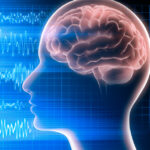
Electrophysiology
Electrophysiology is a technique used to measure electrical activity in biological tissues. It is a versatile tool that can be used to study a wide variety of biological processes. Our Preclinical CNS CRO uses electrophysiology to operate on different preclinical studies and to develop new treatments for neurological disorders.
| Brain slices (LTP) | Rat |
CONCIOUS ANIMALS (TELEMETRY)
| EEG trace monitoring | Mouse – Rat – Dog |
| Electrical amygdala kindling | Rat |
| Quantified EEG | Mouse – Rat - Dog |
| Sleep/wakefulness cycle | Rat |
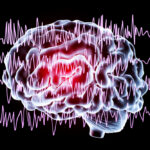
Epilepsy
Epilepsy is a neurological disorder characterized by recurrent seizures. Our Preclinical CNS CRO uses CNS biomarkers and CNS preclinical trials to study the disorder and develop new treatments for seizure and epilepsy.
| 4-AP calcium spontaneous oscillation modeulation | Mouse - Rat Primary Neurons |
| GABA Pathway (calcium spontaneous oscillations) | Mouse - Rat Primary Neurons, and hiPSC mixed culture organoid |
| Glutamate pathway (calcium release and spontaneous oscillations) | Mouse - Rat Primary Neurons, and hiPSC mixed culture organoid |
| Kainate (calcium release) | Mouse - Rat Primary Neurons, and hiPSC mixed culture organoid |
| NMDA antagonists (calcium release) | Mouse - Rat Primary Neurons |
| 6Hz psychomotor | Mouse – Rat – Gerbil |
| Audiogenic seizures | Mouse |
| Bicuculline convulsions | Mouse – Rat |
| Electrical amygdala kindling (Electrophysiology) | Rat |
| Electroconvulsive threshold | Mouse – Rat – Gerbil |
| GBL-induced absence epilepsy (EEG telemetry) | Mouse |
| Intravenous PTZ seizure threshold | Rat |
| Kainic acid convulsions | Rat |
| Kainic acid induced spontaneous seizure | Rat |
| Maximal electroshock | Mouse – Rat |
| Pentylenetetrazole seizures | Mouse – Rat – Dog |
| Pilocarpine induced spontaneous seizure | Rat |
| Picrotoxin convulsions | Mouse – Rat |
| Strychnine convulsions | Mouse – Rat |
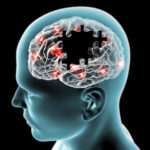
Neurodegeneration
Neurodegeneration is the progressive loss of neurons and their functions in the brain. Preclinical CNS CRO companies such as ours use CNS biomarkers and CNS lab tests to study the disorder and develop new treatments.
| Glutamate-induced excitotoxicity | Rat cortical or hippocampal neurons |
| Immune cell phagocytosis (E.Coli particles) | hiPSC derived microglia |
| Immune cell phagocytosis (S.Aureus particles) | hiPSC derived microglia |
| Inflammatory cytokine release (LPS stimuli) | hiPSC derived microglia |
ALZHEIMER DISEASE
| Streptozotocin (STZ) – induced cognitive deficit | Rat |
| Experimental Procedures | |
|---|---|
| Morris water maze | |
| Delayed alternation |
HUNTINGTON DISEASE
| Motor function and neuroscore subchronic 3-NPA | Rat |
| Experimental Procedures | |
|---|---|
| Activity meter | |
| Rotarod | |
| Lesion volume |
PARKINSON DISEASE
IN VITRO MODELS| 6-OHDA/(Cytolysis / Viability) | SH-SY5Y cells |
| 6-OHDA/induced toxicity (Neurite outgrowth of dopamine neurons) | hiPSC derived dopaminergic neuron |
| MPP + induced toxicity (Neurite outgrowth and cytolysis) | hiPSC derived dopaminergic neuron |
| MPP+ induced toxicity in 3D (calcium spontaneous oscillation modulation) | hiPSC mixed culture organoid(Astrocytes and Neurons) |
| Rotenone induced toxicity (Cytolysis / Viability) | SH-SY5Y cells |
| Rotenone induced toxicity (Neurite outgrowth of dopamine neurons) | hiPSC derived dopaminergic neuron |
| Rotenone induced toxicity in 3D (calcium spontaneous oscillation modulation) | hiPSC mixed culture organoid (Astrocytes and Neurons) |
| Alpha Synuclein PFF model | Mouse |
| Cognitive deficit Bilateral striatal 6-OHDA lesion | Rat |
| L-DOPA dyskinesia Unilateral medial forebrain bundle (mfb) 6-OHDA lesion | Rat |
| Psychosis-like-behaviour Bilateral striatal 6-OHDA lesion | Rat |
| Stepping behavior unilateral medial forebrain bundle (mfb) 6-OHDA lesion | Rat |
| Tremor Tacrine-induced Tremulous Jaw-Movements (TJM) | Rat |
| Turning behavior Unilateral medial forebrain bundle (mfb) 6-OHDA lesion | Rat |
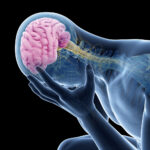
Psychiatric Diseases
Psychiatric diseases are brain disorders that can cause a wide range of symptoms. Our Preclinical CNS CRO capabilities provide a variety of methods to study these disorders, including CNS biomarkers, preclinical trials, preclinical screening of CNS pharmacology, and CNS histology.
ANXIETY
| Elevated plus-maze | Mouse – Rat – Gerbil |
| Fear potentiated startle reflex | Rat |
| Four plates | Mouse |
| Light-dark box | Mouse |
| Marble burying | Mouse |
| Novelty-induced hypophagia | Mouse - Rat |
| Staircase | Mouse |
| Stress-induced hyperthermia (group-housed animals) | Mouse |
| Stress-induced hyperthermia (singly-housed animals) (option: implants) | Mouse |
| Vogel conflict | Rat |
DEPRESSION
| Behavioral despair | Mouse – Rat |
| Chronic Mild Stress | Mouse |
| Differential Reinforcement of Low rate (DRL 30) | Rat |
| Open space swimming | Mouse |
PSYCHOSIS
| Amphetamine hyperactivity | Mouse – Rat |
| Amphetamine stereotypy | Mouse - Rat |
| Apomorphine climbing | Mouse |
| Catalepsy | Mouse - Rat |
| Dual-hit neonatal PCP and post-weaning social isolation | Rat |
| Low dose apomorphine | Mouse |
| Mescaline scratching | Mouse |
| MK-801 hyperactivity | Mouse - Rat |
| Obsessive Compulsive Disorder (OCD)/8OHDPAT | Rat |
| PCP hyperactivity | Mouse - Rat |
| Prepulse inhibition (deficit induced by apomorphine) | Rat |
| Prepulse inhibition (deficit induced by MK-801) | Rat |
| Prepulse inhibition (deficit induced by PCP) | Rat |
| Sociability (3-Chamber) Test | Mouse |
| Social investigation (deficit induced by MK-801) | Rat |
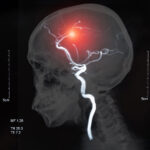
Stroke
Stroke is a brain injury that occurs when the blood supply to part of the brain is interrupted or reduced, preventing brain tissue from receiving oxygen and nutrients. This can cause a sudden loss of brain function, which can lead to a variety of symptoms, including paralysis, speech problems, and difficulty thinking. Central nervous system in vivo models, bioanalysis, and histology can be used in the analysis for stroke studies.
| Excitatory neurotransmitter induced excitotoxicity (Cytolysis)(Glutamate, NMDA, and Kainate | Mouse - Rat Primary Neurons |
| Excitatory neurotransmitter induced excitotoxicity (Mitochondrial Membrane Potential) (Glutamate, NMDA, and Kainate) | Rat / Mouse primary neurons |
| Excitatory neurotransmitter induced excitotoxicity (Calcium Response) (Glutamate, NMDA, and Kainate) | Rat / Mouse primary neurons |
| Intrastriatal NMDA administration | Mouse |
| Experimental Procedures | |
|---|---|
| Lesion volume | |
| Ransient Focal Cerebral Ischemia Middle Cerebral Artery Occlusion | Rat |
| Experimental Procedures | |
| Beamwalking | |
| Foot-Fault | |
| Removal of Adhesive | |
| Neurological Score | |
| Lesion Volume |
| PLATFORM | BIOMARKER | SPECIES (SAMPLE) |
|---|---|---|
| Histology (IHC-P) | Neurons (pan neuron, dopaminergicGABA interneuron, Purkinje) | Rat - Mouse - Pig |
| Glial cells (astrocytes, microglia, oligodendrocytes | Rat - Mouse - Pig | |
| Aggregated protein α-synuclein | Human-Mouse (cell supernatant and brain) | |
| Neuron activity proteins(synapse, myelination) | Rat - Mouse | |
| Nerve growth factor (NPY, TrkA) | Rat - Mouse | |
| Staining (paraffin slices) | Hematoxylin & Eosin, Sirius red, Masson’s trichrome,… | Multiple species & tissues |
| CBA | Inflammation pathway IL-6, IL-10, MCP-1or IL-8 IFN-γ or IL-1β ,TNF and IL-12p70 | Human - Mouse (cell supernatant) |
| ELISA | RAS/Erk Signaling (Erk, P-Erk, S6, P-S6) | Mouse (Pancreas, cerebellum) |
| Alzheimer Pathway(P-Tau Ser398, P-Tau Ser202 Tyr205, GSK3b & P-GSK3) | Rat (Hippocampus) | |
| Amyloid proteins (β-amyloid) | Dog (CSF, plasma) | |
| CBA - ELISA - WB - IHC-PIHC-Fr - ICC - HTRF | Other targets upon request | Multiple species & biological specimens |
Comprehensive Support for Your CNS Research
Our experienced team of scientists collaborates closely with you to design and execute preclinical CNS studies tailored to your specific needs. With our unparalleled in vivo, in vitro, and ex vivo capabilities and expertise, Porsolt offers advanced CNS disease models that serve as powerful tools for investigating the mechanisms of CNS disorders, drug responses, and potential treatment targets.
Our Preclinical CNS CROs lab test services encompass a wide range of comprehensive evaluations, providing a holistic understanding of the effects of test compounds on the central nervous system.
Porsolt
Z.A. de Glatigné
53940 Le Genest-Saint-Isle, France
Telephone +33 2 43 69 36 07
Legal Notice
Any questions or concerns ?
CONTACT US


